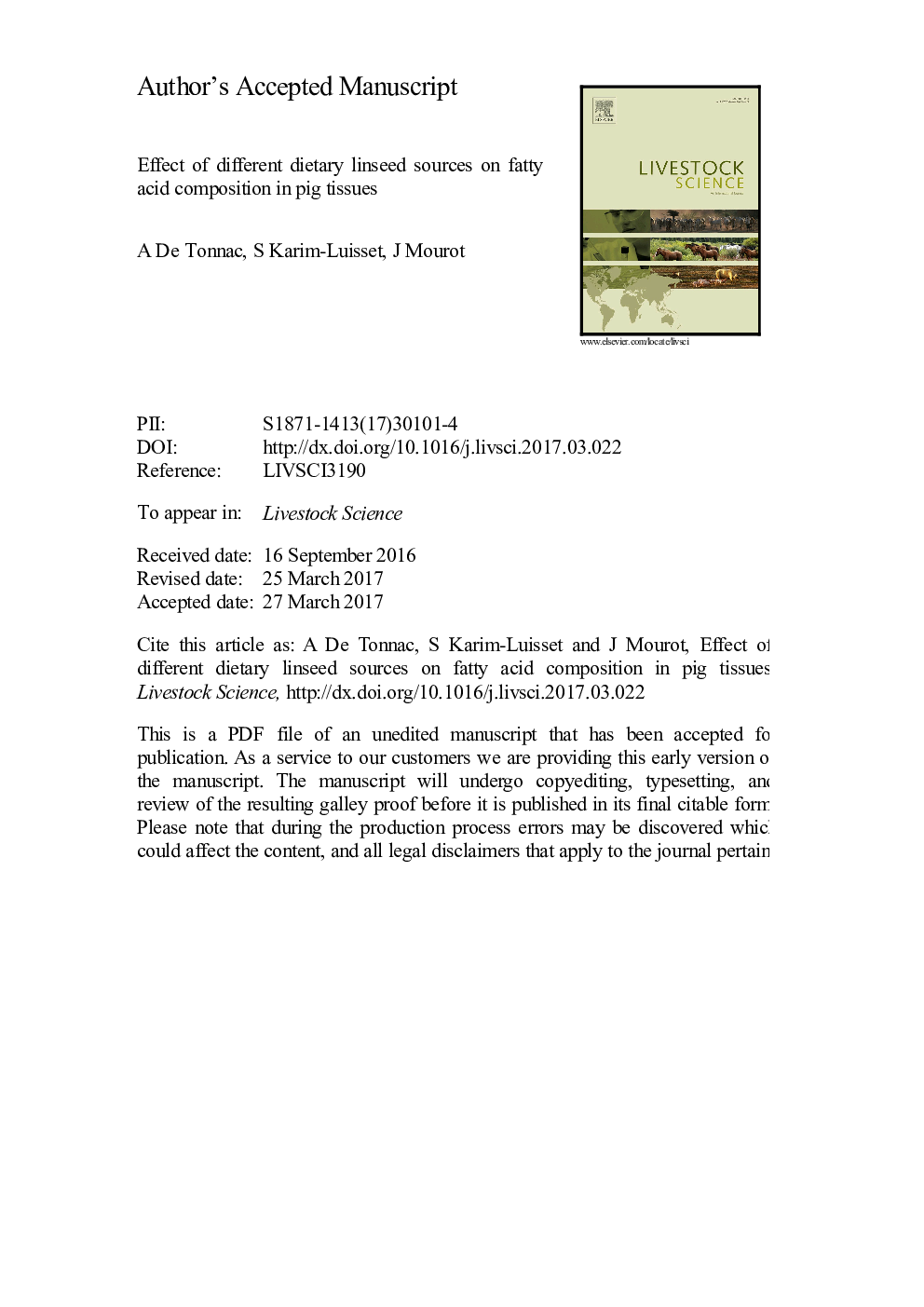| Article ID | Journal | Published Year | Pages | File Type |
|---|---|---|---|---|
| 5543007 | Livestock Science | 2017 | 23 Pages |
Abstract
This study compared effects of diets containing regular or low fiber extruded linseed and of tissue location on deposition of fatty acids (FA) in pigs. Thirty-six crossbreed growing-finishing male pigs (51 kg initial liveweight) received one of three experimental diets: control, extruded linseed (EL) and low fiber extruded linseed (EL-). Diets respectively contained 0.57, 3.90 and 4.35 g of α-linolenic acid (ALA) per kg of feed. Pigs were stunned at 115 kg liveweight and tissues were sampled to determine their FA composition (g/100 g of total FA). Compared to EL diet, the EL- diet increased the ALA content by 18% in the longissimus dorsi muscle, 19% in the diaphragm, 9% in subcutaneous adipose tissues and 17% in flare fat. Content of n-3 polyunsaturated FA (PUFA) significantly increased with both linseed diets in the diaphragm, flare fat and subcutaneous adipose tissues in the back (SCB) and ham (SCH). The longissimus dorsi and semimembranosus muscles contained more PUFA and n-3 PUFA derivatives and less C18:3 n-3 than the diaphragm. Flare fat contained the largest percentage of SFA, followed by SCB and belly. In contrast, subcutaneous adipose tissue in the neck (SCN), adipose tissue in the ham (IH) and the SCH had a higher percentage of PUFA and C18:3 n-3 than belly, SCB and flare fat. The SCB contained the most C22:6 n-3, while the SCH contained the most C20:5 n-3. These results revealed the greater capacity of flare fat, SCB and to a lesser extent, the belly to synthesize saturated FA and the greater capacity of SCN, SCH and IH to store PUFA. This study confirmed the utility of feeding animals with interesting FA to increase their content in meat and by that to improve consumer's health.
Keywords
Related Topics
Life Sciences
Agricultural and Biological Sciences
Animal Science and Zoology
Authors
A. De Tonnac, S. Karim-Luisset, J. Mourot,
